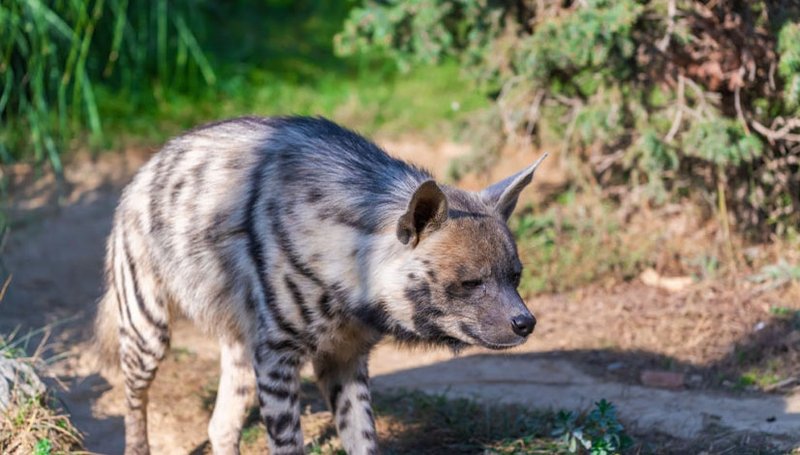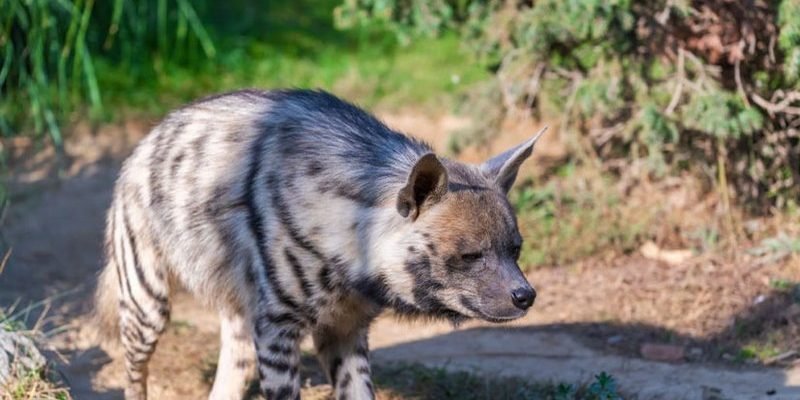
In this article, we’ll explore how striped hyenas raise their young, from the moment of birth to the day they venture out on their own. Striped hyenas aren’t just solitary animals; they live in small clans and have unique ways of nurturing and teaching their young. So, grab your virtual safari hat as we dive into the world of striped hyenas and discover the ins and outs of their family life!
Family Structure of Striped Hyenas
When it comes to social structures, striped hyenas have a very interesting setup. They typically live in small family groups, called clans, which consist of a few related adults and their offspring. This tight-knit community plays a crucial role in raising the young. Unlike solitary animals, striped hyenas rely on each other to provide protection and resources.
The matriarch, usually the most dominant female, leads the clan. She’s responsible for crucial decisions, including where to hunt and when to move the den. The social hierarchy is quite fascinating, and it ensures that the clan functions smoothly. You might be wondering how this affects the cubs. Well, it means they grow up in a nurturing environment where they learn from not just their parents but also from other adults in the clan.
Here’s a fun fact: male striped hyenas have to work hard to get along with the females. They often engage in playful interactions to build bonds, which further fosters a sense of community and support during the cubs’ early years!
Nesting and Denning Habits
When striped hyenas are ready to have their young, they don’t just pick any old spot. They choose a cozy den that offers safety and comfort. Dens can be found in various locations, from abandoned burrows to natural caves. This careful selection is vital—each den protects the cubs from potential predators and harsh weather.
Once the female finds a suitable den, she gives birth to a litter of typically 2 to 4 cubs. At birth, these little ones are blind and helpless, relying entirely on their mother for warmth and nourishment. The mother hyena stays close to her cubs, keeping them secure while she nurses them. Isn’t that just like how many mammals care for their young?
As the cubs grow, they become more curious about the world outside the den. The mother starts introducing them to the clan gradually. It’s a big deal when the cubs first peek out because it marks the beginning of their adventures. The comfort of the den turns into a launching point for exploration!
Cub Development and Social Learning
Cub development in striped hyenas is an exciting and important phase. After a few weeks, the cubs begin to open their eyes and start crawling around. It’s like watching toddlers take their first steps! During this time, they learn valuable lessons not only from their mother but also from older siblings and even from other clan members.
Social learning is a key part of their upbringing. Older cubs often engage in play-fighting, which helps teach the younger ones important skills like communication, defense, and proper hunting techniques. You might be surprised to know that these playful interactions closely mimic adult behaviors, preparing cubs for life outside the den.
Additionally, they learn to recognize social cues. Whether it’s understanding when to be submissive or how to assert dominance, these skills are crucial for their survival in the wild. Just like us, hyenas have their own ways of navigating social dynamics!
Feeding and Nutrition for Growing Cubs
Feeding time for striped hyenas is not just about filling bellies; it’s a multi-step process that involves teamwork. The mother hunts for food, usually focusing on small to medium-sized animals, and brings it back to the den. When she returns, it’s quite the event! The cubs eagerly rush to her, excited to see what she’s brought home.
Nursing is crucial for the cubs, providing them with the nutrients they need in those early weeks. As they grow, their diet gradually shifts, and they start nibbling on solid food. This is when the mother will regurgitate food for them, almost like she’s serving them a special meal. It’s a pretty neat display of nurturing that many might not expect from hyenas!
The clan often hunts together, which provides the cubs with ample opportunities to observe hunting techniques. This group feeding approach teaches them not only how to eat but also how important it is to collaborate and communicate, echoing the very social structure they were born into.
Protection and Challenges
Raising cubs in the wild isn’t without its challenges. Striped hyenas face threats from larger predators like lions and even other hyena species. Therefore, protection is a top priority for the family. The adult members of the clan work together to safeguard the young ones. They’ll often take turns watching over the den while others hunt or forage for food.
Mother hyenas are vigilant during their cubs’ vulnerable early weeks. If danger approaches, she won’t hesitate to defend her young, using vocalizations and assertive body language to deter threats. Imagine a protective mama bear, but in the wilds of Africa!
However, not all challenges come from the outside. Sometimes, a lack of resources can make survival tough. If food is scarce, the entire clan may struggle to feed everyone. This can lead to competition, even among siblings. Yet, this struggle also teaches resilience and adaptability—important traits for the young hyenas as they prepare for their future.
Independence and Leaving the Den
As the cubs grow stronger and more capable, the time for independence approaches. Typically, cubs begin venturing outside the den at around three months old. It’s a significant milestone—like a graduation ceremony for these young hyenas. They start exploring their surroundings, gradually testing their skills in a safe environment.
During this exploration phase, they spend more time observing how adult hyenas interact and hunt. You’ll often find them tagging along during clan activities, picking up valuable lessons for their future. The older cubs help teach the younger ones, and this nurturing continues the cycle of learning and community support.
Eventually, as they reach around one year old, they become more independent but still rely on the clan for support. They’ll continue to be part of the group, learning and growing until they’re ready to venture out on their own, contributing to future generations of striped hyenas.
The Importance of Community in Hyena Parenting
In essence, the way striped hyenas raise their young underscores the importance of community. Their cooperative parenting style not only enriches the lives of the young but also strengthens the clan as a whole. Each member plays a role, whether through hunting, protecting, or teaching.
This impressive social structure teaches us a lot about teamwork and care. In a world where we often focus on individual success, the hyenas remind us of the value of supporting one another. Family doesn’t just mean the ones we’re born with; it can also mean the friends and allies we choose to stand by.
Ultimately, understanding how striped hyenas raise their young can deepen our appreciation for these often-misunderstood creatures. They embody resilience, cooperation, and the intricate tapestry of life in the wild.
As we wrap up our journey through the world of striped hyenas, it’s clear that their parenting style is as unique as the animals themselves. These fascinating creatures not only navigate the challenges of the wild but also create nurturing environments for their young—teaching them vital lessons that will last a lifetime. So next time you hear the word “hyena,” remember the incredible family dynamics behind those symbols of resilience!

